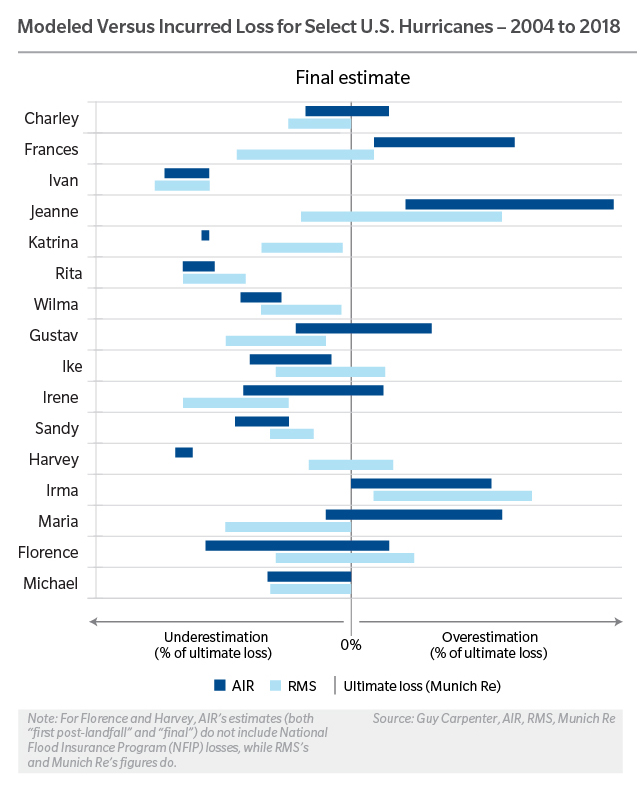
Catastrophe model vendors release tools to support assessment of portfolio losses following significant industry events. Guy Carpenter’s general observation is that there are more underestimations than over estimations of events, globally. In this series, we explore this bias and address its relationship to model fitness, according to Imelda Powers, Senior Cat Management Advisor – Asia Pacific, Guy Carpenter.
An example of our general observation is shown in Figure 1, which shows post-event loss estimates from AIR and RMS on U.S. hurricanes – a region and peril where the vendors have the most experience. There are more estimates to the left (underestimations) than the right (overestimations) of the vertical line indicating the ultimate loss.
Figure 1

Underestimations may derive from non-modeled sources, including subperils (surge, flood, landslide) or risk types (motor, yachts, infrastructure risks). These explicit omissions are amended by users, as appropriate, for their business. Sometimes, the models have not extrapolated sufficiently to extreme hazards, for example, the Mw9 earthquake in Tohoku and extreme liquefaction in Christchurch, and model users may overlook the need to stress test the assumptions. However, the bias towards underestimation has more persistent and fundamental forces than these non-modeled sources. It is important that we explore those forces and address model fitness in view of this bias.